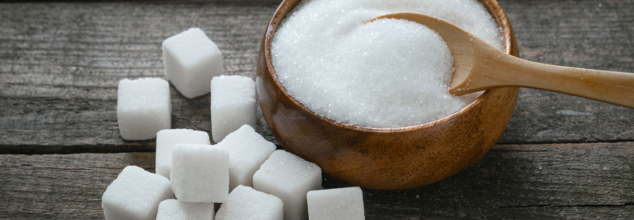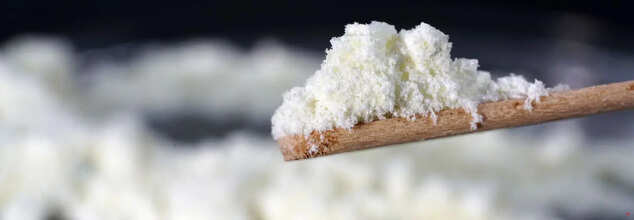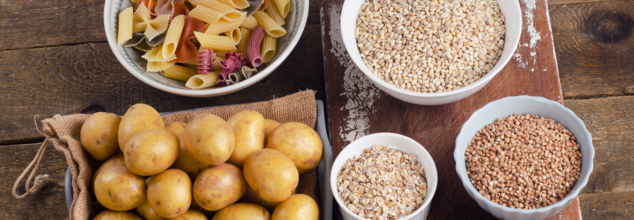
Protein Powder (Credit: Canva)
Real vs. Fake: How to Ensure Your Protein Powder Isn't A Counterfeit
Protein is fundamental to our body's structure and function. Each day, we lose approximately 200 grams of amino acids, the building blocks of proteins. To maintain optimal health, it's recommended to consume about 1 gram of protein per kilogram of body weight. While it's possible to meet these requirements through a balanced diet—providing roughly 60 grams of protein from food—many people turn to protein supplements for convenience, particularly in fitness circles.
One crucial factor in protein consumption is bioavailability, which refers to how effectively the body can absorb and utilize the protein consumed. Whole food sources typically offer higher bioavailability compared to supplements. Animal-based proteins generally contain all nine essential amino acids our bodies can't produce, whereas many plant-based proteins may lack one or two. For those relying on vegetarian diets, it's important to combine different protein sources to ensure a complete amino acid profile.
Risks Of Protein Deficiency
Insufficient protein intake can significantly hinder bodily functions, affecting growth, hair health, and nail strength. Historically, inadequate nutrition has led to severe health implications; for instance, life expectancy in 1947 was just 32 years, while modern averages have improved to around 67 years for men. Despite these advancements, a balanced diet remains essential for maintaining health and vitality.In recent years, the protein supplement market in India has witnessed significant growth, projected to expand from $91.8 million in 2023 to $120.3 million by 2028. However, the industry is also fraught with challenges, particularly regarding the authenticity of products. Reports suggest that around 90% of protein powders in India may be adulterated, which can severely undermine their effectiveness.
How To Identify Fake Protein Powders
Recognizing the difference between genuine and counterfeit protein supplements is crucial. Here are some tips to ensure you're getting a quality product:1. Examine the Label: Authentic protein powders will clearly list their ingredients, including the source of protein and any additives. Look for reputable brands with transparency about their production processes.
2. Check the Amino Acid Profile: Quality protein supplements will provide a complete amino acid profile. Be wary of products lacking this information, as it may indicate inferior quality.
3. Observe Texture and Consistency: Genuine protein powders should have a consistent texture and color. Look out for clumping, discoloration, or foreign particles, which can signal contamination or poor quality.
4. Smell Test: An unusual or strong smell may indicate spoilage or the presence of harmful additives. Quality protein supplements typically have a neutral scent.
5. Third-Party Testing: Seek out brands that undergo third-party testing for purity and potency. Certifications from recognized organizations can add a layer of assurance regarding the product’s authenticity.

Credits: Canva
How Much Sugar Is Too Much Sugar?
Sugar is one of the most controversial ingredients in modern diets. Everyone is talking about it. How much to take? To consume it or not? How can one limit it? But sadly, it is everywhere. It is in your cereals, in your sauces and in your so called "health bars". However, it is important to understand that not all sugar is the same. The reality is different from blanket warnings. So, to make it easier for you, here is a break down of what sugar really is and how it affects your body.
What Is Sugar?
It is a carbohydrate that gives foods its sweet taste. It also exists in many forms, natural and as added ingredients.
Naturally occurring sugars include fructose which are present in fruits; lactose, which are present in dairy; maltose, which are present in sprouting grains; and glucose, which is body's go-to fuel and found in fruits, and is also created during digestion.
Whereas, added sugars are he one that comes after processing. They are called sucrose, or table sugar, high-fructose or corn syrup, honey agave nectar, maple syrup, and coconut sugar.
While your body ultimately breaks down all kinds of sugars into glucose or fructose, the source and accompanying nutrients, which could be fiber or fat may impact on how it is being absorbed in your body.
Why Too Much Sugar Could Be A Problem?
High sugar intake can lead to reduction in insulin sensitivity and also increase the risk of type 2 diabetes. It can also promote fat buildup in the liver. Sugary foods also lack fiber or protein, so you are more likely to overeat. It could also feed oral bacteria and contribute to cavities.
However, not all sugars are equally harmful.
How Much Sugar Can You Eat?
As per the World Health Organization (WHO), you must keep your sugar under 10% of your total calories. The ideal limit is 5%, which is around 6 tsp of sugar in total.
As per the American Heart Association, men can have 9 tsp of sugar, while women can have 6 tsp of sugar.
As per the US Dietary Guidelines, sugar must be kept under 10% of your daily calories, which is about 50g in a 2,000 calorie diet.
However, in reality, an average American consumes around 77g of sugar, way above the limit.
What All Has Added Sugar In It?
Added sugar isn’t just in desserts. It shows up in:
- Flavored yogurts (15–25g/serving)
- Pasta sauces (up to 12g/half-cup)
- Breakfast cereals and granola (10–15g/serving)
- Salad dressings and protein bars
To manage your intake:
- Read labels for “added sugars”
- Learn sugar’s many names (like dextrose or maltose)
- Choose whole, unprocessed foods
- Use cinnamon or fruit as natural sweeteners
What you must keep in mind is that one size does not fit all. Athletes may benefit from some quick-digesting sugars during or after exercise. Whereas children are more sensitive to sugar's effects and early eating habits. People with diabetes or metabolic conditions must also stay careful and monitor their sugar consumption.
Sugar isn’t evil—it’s context that matters. Focus on reducing added sugars, not cutting all sweet foods out. Occasional treats are fine if your overall diet is nutritious. By staying informed, you can enjoy sweetness without compromising your health.

Credit: Canva
Two Potassium-Rich Foods That Could Lower Blood Pressure Better Than Cutting Salt
People living with high blood pressure are often encouraged to limit their daily salt intake to under 6g. But new findings suggest that merely cutting back on sodium may not be enough. Experts now recommend increasing dietary potassium—commonly found in bananas and broccoli—as a more impactful way to manage blood pressure levels.
Researchers at the University of Waterloo in Canada have developed a mathematical model that emphasizes the importance of the balance between potassium and sodium in the diet. Their findings indicate that raising the ratio of potassium to sodium may be more effective for blood pressure control than focusing solely on reducing salt.
“Usually, when we have high blood pressure, we are advised to eat less salt,” explained Dr Anita Layton, a professor of applied mathematics, computer science, pharmacy, and biology at the university. “Our research suggests that adding more potassium-rich foods to your diet, such as bananas or broccoli, might have a greater positive impact on your blood pressure than just cutting sodium.”
Excess salt in the diet can lead the body to retain water, which adds pressure to blood vessel walls and may eventually cause damage to organs such as the kidneys. While reducing salt is beneficial, potassium offers a counteracting effect by helping the body expel sodium through urine and relax blood vessel walls.
Both potassium and sodium are electrolytes—substances essential for regulating bodily functions such as nerve signaling, muscle contractions, and fluid balance. The model created by the Waterloo team shows how increasing potassium can restore a more favorable electrolyte balance, supporting healthy blood pressure regulation.
Study leader Melissa Stadt, a PhD candidate in Waterloo's Department of Applied Mathematics, highlighted that human diets have drastically changed over time. “Early humans ate lots of fruits and vegetables, and as a result, our body's regulatory systems may have evolved to work best with a high potassium, low sodium diet,” she said. "Today, western diets tend to be much higher in sodium and lower in potassium. That may explain why high blood pressure is found mainly in industrialised societies, not in isolated ones."
16 Million People In UK Have High Blood Pressure
Currently, around one-third of adults in the UK—an estimated 16 million people—are thought to have high blood pressure. Alarmingly, more than five million of them remain undiagnosed, putting them at greater risk for heart attacks, strokes, and kidney disease.
These new findings suggest that a shift in dietary focus could make a meaningful difference. Rather than concentrating solely on what to avoid, such as salt, patients may benefit even more by including potassium-rich foods like spinach, sweet potatoes, lentils, and avocados as part of their daily meals.
As research continues to uncover the intricate connections between diet and health, one thing is clear: the solution to high blood pressure may lie not just in subtraction but in smarter additions to our plates.

These Healthy Carbs Can Help You Lower Your Cholesterol
Many people believe that one of the biggest enemies of health that is present in their foods is carbohydrates. They avoid all kinds of carbs whether they are natural or processed. However, this nutrient is essential for our body and helps us generate energy for daily activities.
Some popular carbs are foods like French fries and pizzas. These are unhealthy and should be avoided as much as possible. Refined carbs like this can contribute to high cholesterol. Which in turn can affect your heart health.
However, there is a whole other category of carbohydrates that can be surprisingly healthy. In fact, certain carbs possess properties that can positively impact elevated cholesterol levels, potentially lowering them and offering your heart valuable protection. Remember, balance is key. Instead of drastic dietary changes, incorporating a variety of these beneficial carbs into your daily meals and snacks is the most sustainable approach
Brown Rice
According to the Brown University Health, brown rice is a healthy whole grain packed with good stuff like fiber, vitamins, and minerals. Eating whole grains is linked to a healthier heart and can lower "bad" cholesterol. The fiber in brown rice helps stop your body from absorbing too much cholesterol. Plus, it has special things that can lower your overall cholesterol and even help your blood vessels stay healthy.
Purple Potatoes
These colorful potatoes have special things called anthocyanins, which give them their purple color. According to Biomedical and Pharmacology Journal, these can help your body in many ways, including improving cholesterol levels and keeping your blood vessels healthy. Purple potatoes also have a type of fiber called resistant starch. This fiber isn't fully digested and helps prevent your body from absorbing cholesterol. It can even help lower other unhealthy fats in your blood.
Kiwi
Kiwi is a tasty fruit that's great for managing cholesterol. It's full of soluble fiber, which helps trap cholesterol and move it out of your body. This type of fiber stops cholesterol from getting into your bloodstream. Kiwi might also help lower your "bad" cholesterol. It has lots of vitamin C and other good things that can reduce swelling and protect your heart. Plus, it helps your body digest food better, which can also help control cholesterol.
Oats
According to Mayo Clinic, oatmeal is a super healthy food for your heart and can even lower cholesterol. It has lots of soluble fiber, which works like a cleaner, grabbing onto cholesterol and taking it out of your body. Eating oatmeal regularly can really help bring down your "bad" cholesterol levels. Just make sure to choose plain oats instead of the sugary kinds.
Beets
According to the University of Illinois Urbana, beets are a healthy vegetable that might help lower your cholesterol. They're low in fat and calories but have a good amount of fiber. This fiber can help you feel full and can also help lower cholesterol by removing fat from your body. Beets also have special things that can fight swelling, which is linked to higher cholesterol. Drinking beet juice can also be helpful for your cholesterol levels.
Oranges
Havard Health explains that oranges are known for vitamin C, but they also help lower cholesterol. They have soluble fiber, which forms a gel that binds to cholesterol in your body and stops it from being absorbed. Oranges also have plant sterols that compete with cholesterol, so less of it gets into your blood.
Chickpeas
Chickpeas are a great food if you're watching your cholesterol. WebMD explains that they're full of soluble fiber, which helps lower "bad" cholesterol. This fiber works by sticking to cholesterol in your gut and preventing it from getting into your bloodstream. Eating more chickpeas can really make a difference for your cholesterol and heart health.
© 2024 Bennett, Coleman & Company Limited

